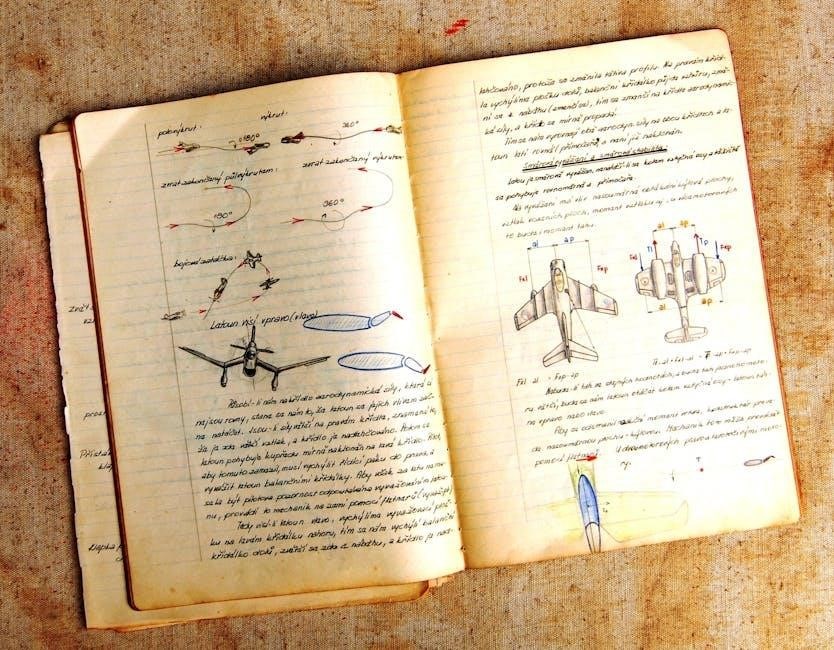The Yaskawa V1000 manual provides comprehensive guidance for installing, programming, and operating the V1000 drive, ensuring optimal performance and safety in various industrial applications.
1.1 Overview of the Yaskawa V1000 Drive
The Yaskawa V1000 is a compact vector control AC drive designed for versatility and efficiency in various industrial applications. It offers advanced motor control, high performance, and ease of use. The drive supports both single-phase and three-phase inputs, making it suitable for diverse operating conditions. With its robust design and user-friendly interface, the V1000 drive is ideal for applications requiring precise speed and torque control. Its compact size and energy-saving features make it a reliable choice for industrial automation and motor control systems.
1.2 Key Features of the V1000 Series
The Yaskawa V1000 Series is a compact vector control drive offering advanced motor control and high performance. Its key features include a user-friendly interface, energy-saving capabilities, and compatibility with both single-phase and three-phase inputs. The drive supports precise speed and torque control, making it suitable for diverse industrial applications. Additionally, it provides robust reliability, adaptability to various operating conditions, and a compact design that saves space. These features ensure efficient and reliable operation, making the V1000 Series a versatile solution for industrial automation and motor control systems.
1.3 Applications of the Yaskawa V1000
The Yaskawa V1000 drive is suitable for a wide range of industrial applications, including material handling, water treatment, and HVAC systems. It is commonly used in conveyors, pumps, fans, and other motor-driven systems requiring precise speed control. The drive’s compact design and high performance make it ideal for applications where space is limited but reliability is critical. Additionally, it is used in various manufacturing processes, such as packaging, printing, and food processing, ensuring efficient and consistent operation in demanding environments.

Safety Precautions and General Warnings
Adhere to safety guidelines to prevent accidents. Avoid modifying the drive, and ensure compliance with all applicable regulations and standards during installation and operation.
2.1 Important Safety Messages
Read this manual thoroughly before handling the Yaskawa V1000 drive. Heed all safety messages to prevent accidents. Never modify the drive, as this can cause malfunctions. Ensure proper installation and operation according to the guidelines. Failure to comply may result in injury or equipment damage. Always follow local regulations and safety standards. Refer to the manual for specific warnings and precautions to ensure safe operation and maintenance of the drive.
2.2 Pre-Installation Safety Considerations
Before installing the Yaskawa V1000 drive, ensure all safety guidelines are followed. Read the manual thoroughly and understand the risks associated with improper installation. Verify the drive’s nameplate ratings match the application requirements. Ensure proper grounding to prevent electrical hazards. Handle the drive with care to avoid physical damage. Use appropriate personal protective equipment. Check for any damage or wear before installation. Contact a Yaskawa representative if uncertain about any aspect of the process. Always comply with local safety regulations and standards to ensure a safe working environment.

2.3 General Safety Guidelines for Handling the Drive
Always handle the Yaskawa V1000 drive with care to avoid physical damage. Read the manual thoroughly and follow all safety precautions; Avoid exposing the drive to excessive moisture or humidity. Wear appropriate protective equipment, such as gloves and safety glasses, when handling the drive. Ensure the drive is properly grounded before installation. Never attempt to modify the drive or its components. Keep the drive away from direct sunlight and extreme temperatures. Follow proper lifting techniques to prevent injury. Avoid touching internal components to prevent electrical shock. Ensure the drive is stored in a clean, dry environment when not in use.

Installation and Wiring Guidelines
Proper installation and wiring of the Yaskawa V1000 drive ensure safe and efficient operation. Follow the manual’s instructions for mechanical mounting, electrical connections, and grounding procedures.
3.1 Mechanical Installation Requirements
The Yaskawa V1000 drive requires proper mechanical installation to ensure reliable operation. Mount the unit on a sturdy, flat surface to avoid vibration and ensure proper heat dissipation. Use the specified torque values for screws to secure the drive firmly. Ensure the installation area is well-ventilated to prevent overheating. The drive must be installed in an upright position to maintain airflow and prevent damage. Follow the manual’s guidelines for dimensional clearances and alignment. Do not modify the drive’s housing or components, as this may void the warranty or compromise safety. Proper grounding is essential for safe operation.
3.2 Electrical Installation and Wiring Instructions
Proper electrical installation is critical for the Yaskawa V1000 drive. Ensure all wiring matches the drive’s power supply requirements and use appropriately rated cables. Connect the power supply lines to the terminal block as specified in the manual, ensuring correct phase and ground connections. Install a suitable disconnect device for safe maintenance. Avoid overloading terminals and keep wiring neat to prevent electromagnetic interference. Always disconnect power before performing any electrical work. Refer to the terminal block diagram for precise connections and follow all safety guidelines to prevent damage or electrical hazards.

3.3 Terminal Block Diagram and Connections
Refer to the terminal block diagram in the manual for precise connections. Ensure power supply lines are connected to the correct terminals, matching the drive’s specifications. Control circuits and external devices should be wired according to the diagram to avoid malfunctions. Properly connect the ground terminal to ensure safe operation and prevent electrical noise. Verify all connections are secure and meet the recommended torque specifications. Avoid overloading terminals, as this can cause damage. Always consult the manual for specific wiring instructions to ensure compatibility and safety;

Programming and Parameter Configuration
The Yaskawa V1000 manual guides users through programming and parameter setup, enabling customization of drive operations for specific applications, ensuring efficient and precise control of motor functions.
4.1 Getting Started with Programming
Getting started with programming the Yaskawa V1000 involves understanding the drive’s basic functions and parameter settings. Begin by connecting a programming device, such as a PC or handheld programmer, and ensure the drive is in a stopped state. Review the parameter list to configure settings like motor data, control modes, and I/O configurations. Familiarize yourself with essential parameters for operation, such as acceleration/deceleration times and torque limits. Always follow safety guidelines and refer to the technical manual for detailed instructions on initializing and customizing the drive for specific applications.
4.2 Parameter Settings and Configuration
Parameter settings for the Yaskawa V1000 drive are essential for customizing its operation to specific applications. Begin by selecting the control mode, such as V/f control or vector control, based on your motor type and performance requirements. Adjust parameters like acceleration/deceleration times, torque limits, and motor data to match your system’s needs. Refer to the manual for default values and ensure settings align with your motor specifications. Save configurations to prevent data loss during power cycles. Proper parameter configuration ensures efficient and reliable drive operation.
4.3 Advanced Programming Features
The Yaskawa V1000 drive offers advanced programming features to enhance functionality and customization. Users can implement custom control algorithms using the drive’s built-in PLC functionality, enabling complex logic and sequencing. Additionally, the drive supports multi-motor control, allowing synchronized operation of multiple motors. Advanced parameter settings enable fine-tuning of torque, speed, and position control for precise performance. The manual provides detailed instructions for configuring these features, ensuring optimal drive operation in demanding industrial applications. Proper setup of these advanced functions requires careful planning and reference to the manual’s guidelines.

Operation and Control of the V1000 Drive
The V1000 drive offers seamless operation and control, enabling precise motor management through various control methods, including voltage/hertz and vector control, ensuring efficient and reliable performance.
5.1 Starting and Stopping the Drive
To start the V1000 drive, ensure all connections are secure and parameters are correctly configured. Power up the drive and initialize operation using the control signals or keypad. For stopping, follow the specified shutdown procedure to avoid abrupt halts, which may damage the system. Always de-energize the motor properly and monitor the drive’s status during shutdown to ensure safe and reliable operation.
5.2 Control Methods and Interfaces
The Yaskawa V1000 drive supports multiple control methods, including keypad operation, external terminal inputs, and fieldbus communication. The built-in keypad allows direct parameter adjustments, while external signals enable integration with industrial control systems. Communication interfaces like Modbus and CANopen facilitate seamless connectivity, ensuring efficient monitoring and control from central systems. These versatile control options enhance operational flexibility and suitability for diverse industrial applications, making the V1000 a robust choice for precise motor control and automation.
5.3 Monitoring and Adjusting Drive Operations
The Yaskawa V1000 drive allows real-time monitoring of operational parameters such as speed, torque, and current through its built-in display or external software tools. Adjustments can be made using the keypad, external control signals, or communication interfaces like Modbus. Users can fine-tune settings for optimal performance and troubleshoot issues by reviewing operational data and fault history. Regular monitoring ensures smooth operation, while adjustments enable customization to meet specific application demands, maintaining efficiency and reliability in industrial environments.

Troubleshooting and Fault Diagnosis
The manual provides detailed procedures for identifying and resolving common issues, including error codes, diagnostic tools, and step-by-step solutions to ensure minimal downtime and optimal performance.
6.1 Common Issues and Solutions
The Yaskawa V1000 manual outlines frequent issues such as error codes, power supply problems, and parameter misconfigurations. Solutions include resetting the drive, checking wiring connections, and verifying parameter settings. For error codes, the manual provides detailed explanations and corrective actions. Additionally, it advises users to consult diagnostic tools and troubleshooting guides to identify root causes. Regular maintenance and updating firmware can prevent recurring issues. If problems persist, contacting Yaskawa support is recommended for specialized assistance. Always refer to the manual for step-by-step solutions to ensure safe and effective troubleshooting.
6.2 Error Codes and Their Meanings
The Yaskawa V1000 manual lists specific error codes, each indicating a unique issue. Codes like “AL.01” or “AL.02” signify alarm conditions, such as overcurrent or overheating. Fault codes, like “F000” to “F255,” represent critical errors requiring immediate attention. The manual provides detailed explanations for each code, including possible causes and solutions. For example, “E.OVERLOAD” indicates excessive load, while “E.OV1” points to overvoltage. Referencing the error code section ensures accurate diagnosis and resolution, minimizing downtime and ensuring safe operation. Always consult the manual for precise interpretations and corrective actions.
6.3 Diagnostic Tools and Techniques
The Yaskawa V1000 manual outlines advanced diagnostic tools and methods to identify and resolve drive issues. Built-in diagnostic functions, such as parameter monitoring and fault history logs, enable technicians to analyze operational data. External tools, like Yaskawa’s software utilities, provide real-time monitoring and detailed fault analysis. The manual also describes step-by-step troubleshooting techniques, such as checking wiring, verifying parameter settings, and testing input/output signals. These tools and techniques ensure efficient problem resolution, minimizing downtime and optimizing drive performance. Always refer to the manual for specific diagnostic procedures and recommendations.

Maintenance and Inspection Procedures
The Yaskawa V1000 manual details routine maintenance tasks, inspection checklists, and procedures for replacing wearable parts to ensure optimal performance and extend the drive’s operational lifespan.
7.1 Routine Maintenance Tasks
The Yaskawa V1000 manual outlines essential routine maintenance tasks to ensure the drive’s reliability and performance. These include cleaning the fan and heatsink, inspecting terminal connections, and checking for wear on moving parts. Regularly verifying the condition of capacitors and ensuring proper ventilation are also recommended. Additionally, the manual advises replacing wearable parts such as cooling fans and contactors as needed. Always use genuine Yaskawa replacement parts to maintain optimal functionality. Refer to the manual for detailed procedures and schedules to keep the V1000 operating efficiently.
7.2 Inspection Checklist for Optimal Performance
To ensure the Yaskawa V1000 drive operates at peak performance, follow a detailed inspection checklist. Check all terminal connections for tightness and signs of wear. Inspect the cooling fan and heatsink for dust buildup, ensuring proper airflow. Verify that all capacitors are functioning correctly and show no visible damage. Examine the drive’s casing for any physical damage or corrosion. Ensure all internal and external components are free from contamination. Regularly review the drive’s error history and clear any logged alarms. Refer to the manual for a comprehensive checklist and maintenance schedule.
7.3 Replacement of Wearable Parts
Regular replacement of wearable parts ensures the Yaskawa V1000 drive maintains optimal performance. Key components like capacitors, fans, and connectors may degrade over time. Always follow the manual’s guidelines for replacement procedures. Power down the drive before starting any work. Use genuine Yaskawa parts to ensure compatibility and reliability. If unsure, consult a qualified technician to avoid potential damage or safety risks. Keep records of replacements for future maintenance planning. Proper part replacement extends the drive’s lifespan and prevents unexpected downtime.

Technical Specifications and Ratings
The Yaskawa V1000 drive features detailed technical specifications, including power ratings, environmental operating conditions, and compliance certifications, ensuring reliable performance across various industrial applications.
8.1 Electrical Specifications
The Yaskawa V1000 drive is designed to operate with a wide range of electrical inputs, including single-phase and three-phase power supplies. It supports input voltages from 200 to 600V AC, with a frequency of 50 or 60 Hz. The drive delivers precise motor control with an output frequency range of 0 to 400 Hz. It is compatible with various motor types, including induction and permanent magnet motors. The V1000 series also features high efficiency and power ratings up to 1,000 horsepower, making it suitable for demanding industrial applications. Detailed voltage, current, and power specifications are provided in the manual.
8.2 Environmental and Operating Conditions
The Yaskawa V1000 drive is designed to operate under specific environmental conditions, including a temperature range of -10°C to +40°C for standard models and up to +50°C for certain configurations. The drive requires a relative humidity of 20% to 80% non-condensing. It is suitable for installation at altitudes up to 1,000 meters above sea level without derating. For higher altitudes, derating may be necessary. The manual specifies acceptable operating conditions, including power supply stability and ambient air quality, to ensure optimal performance and reliability. Always refer to the manual for detailed environmental specifications.
8.3 Compliance and Certifications
The Yaskawa V1000 drive complies with international standards and certifications, ensuring safety and reliability in various applications. It meets CE marking requirements for the European market and is certified by UL and cUL for North American standards; The drive also adheres to RoHS directives, minimizing environmental impact. For specific applications, such as marine or hazardous environments, additional certifications may apply. Always verify the manual for compliance details relevant to your application. This ensures the drive operates within regulatory standards, providing optimal performance and safety across global installations.